#Persicaria hydropiper (Water Pepper)
Explore tagged Tumblr posts
Text
Wildflower Walk ?
Hello everyone! I hope this post finds you all well. I apologize for not posting for a while. It has been a weird summer for sure with the heat and drought. I was busy with the garden picking sweet corn and green beans right up until August 17. Somehow I managed to get 455 ears of sweet corn in the freezer, and thanks to the ‘Provider’ green beans, 34 quarts of green beans. Of course, not all the…
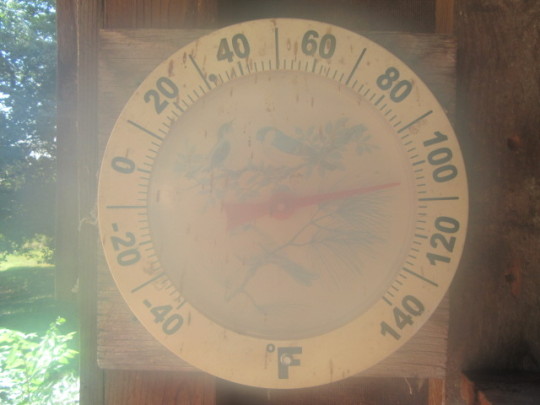
View On WordPress
#Ambrosia bidentata (Lanceleaf Ragweed)#Asclepias hirtella (Prairie/Tall Green Milkweed)#Asclepias syriaca (Common Milkweed)#Bidens aristosa (Tickseed Sunflower or Bearded Beggarticks)#Datura stramonium (Jimson Weed)#Elephantopus carolinianus (Leafy Elephant&039;s Foot)#Erechtites hieraciifolius (Fireweed/Pilewort)#Erigeron annuus (Annual or Daisy Fleabane)#Etc.)#Eupatorium serotinum (Late Boneset)#Impatiens capensis (Jewelweed)#Lespedeza cuneata (Chinese Bushclover)#Persicaria hydropiper (Water Pepper)#Persicaria pensylvanica (Pinkweed)#Phytolacca americana (American Pokeweed)#roton capitatus (Hogwort/Woolly Croton/Goatweed)#Rudbeckia hirta (Black-Eyed Susan)#Sida spinosa (Prickly Fanpetals)#Solanum sarrachoides (Hairy Nightshade)#Solidago sp. (Goldenrod)#Symphyotrichum lateriflorum (Calico Aster)#Tridens flavus (Purpletop#Tripsacum dactyloides (Eastern Gamagrass)#Verbesina virginica (White Crownbeard/Frostweed)#Vernonia missurica (Missouri Ironweed)
0 notes
Text

犬蓼[Inutade] Persicaria longiseta
犬[Inu] : Dog
蓼[Tade] : Knotweed, water pepper
The prefix 犬 is applied to something similar but useless or not authentic. In this case, the real one is 柳蓼[Yanagitade](Persicaria hydropiper,) whose leaves have a pungent taste and are used to make seasonings.
Saying: 蓼食う虫も好き好き[Tade kuu mushi mo sukizuki] Meaning: There are even some insects that like to eat water pepper. (literal translation) Just as insects willingly eat spicy taste like Tade, people have different tastes. https://www.goodreads.com/book/show/194642.Some_Prefer_Nettles
Inutade with the buds and flowers are modest but tasteful. Another name is 赤飯[Aka(no)manma](Red rice.) https://bunka.nii.ac.jp/heritages/detail/426323
16 notes
·
View notes
Text
Persicaria hydropiper or Water Pepper, also known as Arse-smart.
0 notes
Text
#1831 - Persicaria x?- Knotweed



Another one from Lake Richmond, where it was growing around the end of the thrombolite-viewing boardwalk. I took some to the AgDept along with some of the other weeds, since the herbarium didn’t have any Persicaria from that locality, but their closer look turned up a bit of a surprise.
“The Persicaria from Lake Richmond has Ocreas (stem bracts) that have ciliate margins (P. hydropiper character), Leaves also have ciliate margins. Flowers are white/green, in distinct clusters not dense and overlapping as in normal P. lapathifolia BUT leaves have scattered yellow glands underneath (not dense) and this is a defining character of P. lapathifolia. I wonder if this is a form of lapathifolia or a hybrid with P. hydropiper (within this species range), it could have come from a garden or who knows where.”
If it is a hybrid, lets hope it doesn’t have the kind of hybrid vigour that turns it into a major weed.
Persicaria is a cosmopolitan genus in the Polygonaceae, known as knotweeds and smartweeds. It includes annual and perennial herbs with taproots, fibrous root systems, rhizomes or stolons. The stems are often erect but may be prostrate along the ground, and some species protect themselves with prickles. The stems can be strong enough to support themselves, twining and climbing.b The flowers might be white, greenish, reddish, pink or purple, groewing in an inflorescence as here. The fruit are seed-like achenes - where the fruit wall (pericarp) encloses the solitary seed so closely as to seem like a seed coat - and might take a number of shapes, including a disc or a sphere (the ‘seeds’ on the outside of a strawberry are also achenes).
As for the two species implicated above, lapathifolia is also known as pale persicaria, and a weed in Britain and Europe. Other common names for the plant include pale smartweed, curlytop knotweed, and willow weed. It grows near water and in disturbed ground, rubbish tips and verges in many parts of the world, and the form of the plant varies widely depending on local conditions.
P. hydropiper on the other hand grows in damp places and shallow water in Australia, New Zealand, temperate Asia, Europe, and North America. Common names include water pepper, marshpepper knotweed, or tade. Cultivated varieties are eaten in East Asia for their pungent flavor. Most animals do not eat wild water pepper which has much higher amounts of the flavor compounds, but some insects do. This led to a Japanese saying "Tade kuu mushi mo sukizuki" (蓼食う虫も好き好き "Some insects eat water pepper and like it"), which may be translated as “There is no accounting for taste” or “Some prefer nettles.”
3 notes
·
View notes
Link
My daughter’s boyfriend recently came back from Singapore and declared his favourite dish is now laksa. I have a lot of empathy with him as laksa is also a strong favourite of mine and it made me realise that I have not had a laksa for years, living in France.
So it was something of a surprise and relief to hear that laksa restaurants are now sprouting around London, a city which I visit several times a year and where I am currently writing this.
To research the dish, my daughter and I planned visits to several restaurants serving laksa but in the end, we only managed two venues due to work and other issues.
In preparation, I did some investigation into what constitutes a laksa. And there is no straight answer due to the varieties of laksa available. One would have thought all laksa would have something in common, but that is simply not the case (with the exception of bean sprouts).
Varieties
As I grew up in Johor, the first laksa I had encountered was Johor Laksa, an idiosyncratic version seldom found anywhere else. It comprises thick noodles, sardine paste tangy with calamansi limes, cooked in coconut curry gravy with laksa leaves and garnished with fresh salad.
Later I discovered a different laksa in Kuala Lumpur, which actually originated from Ipoh. This is a bowl of rice or wheat noodles drenched in a spicy orange/gold soupy gravy prepared with pulverised dried shrimps, curry paste, sambal (shrimp-based chilli paste), garnished with fish cake slices, fried tofu cuts and/or chicken.
Bloody raw-looking cockles are often an extra addition for just a few cents more. This is more commonly known as curry laksa.
Assam laksa is popular in Penang. Photo: Filepic
And in Penang, there is the fragrant but punchy assam laksa, a rice noodle bowl which uses no coconut milk in a broth based on tamarind, lemongrass, belacan (fermented shrimp paste), fish bones and garnished with ginger flower, bean sprouts, cucumber, shaved onions, raw chillies, mint, prawn paste, chopped fish and laksa leaves.
The Singapore laksa seems to be a sanitised variant of curry laksa from Kuala Lumpur or Ipoh, though it does not offer the option of bloody cockles and may introduce char siew (barbecued pork) or roast pork instead.
Laksa leaf
One would have thought that all laksa would necessarily contain the eponymous laksa leaves. But this is not the case as curry laksa typically do not use them. Nevertheless, the leaf itself is an interesting subject.There are actually two kinds of laksa leaf, which taste similar and are used interchangeably. One is known scientifically as Persicaria odorata and the other is Polygonum minus or Polygonum minor.
The first species is commonly known as Vietnamese coriander in the West, daun laksa (Malaysia), Rau Ram (Vietnam) and Phak Phai (Thailand) where it is the main spice in various kinds of tom yam dishes.
The second species is known as daum kesum and is popular in Malay dishes. Both species are related to knotweed and are from the Polygonaceae family; they are both perennial creepers native to South-East Asia.
The daun kesom is a type of laksa leaf. Photo: Filepic
Both species have high concentrations of aliphatic aldehydes in its oils which contribute to their particular aroma and flavours; eg. decanal and dodecanal.
In total, 69 aroma compounds have been identified in the plant oils by chromatography and mass spectroscopy. These compounds are also claimed to have antimicrobial, antioxidant, immuno-stimulant and anti-carcinogenic properties. Additionally, laksa leaves have a relatively wide spectrum of mineral/vitamin nutrients and the high oxalic acid content is also a digestion aid.
In other countries, Persicaria hydropiper, also known as the water-or marsh-pepper, is sometimes confused for the laksa leaf plant. Wild water-pepper contains compounds which can irritate the skin so the Japanese use cultivars (specially cultivated varieties) of water-pepper to make a garnish for sashimi and also an unusual water-pepper sauce served with grilled fish.
History of laksa
Laksa is acknowledged to be a Peranakan concoction, based on the historical co-mingling of Chinese, Malay and Indonesian influences, with probably a touch of Indian as well.
The origin of the word laksa itself is particularly hazy. One leading theory is that it came from the Persian word, “lakhsha” which translates roughly into “slippery”, and possibly alludes to the noodles in the bowl, according to the Oxford Companion to Food.
Or it may have been a bastardisation of the Cantonese words “ley sah” (or “spicy sand”) which references the texture of the ground dried prawns used in some versions. Or it might have come from the Sanskrit “laksha” which is the word for “many” and may be a reflection of the many ingredients in the dish. The least attractive suggested origin may be the corruption of the Hokkien phrase “lup sup” which basically means “messy” or “dirty”.
From the name history, it is feasible that laksa, or at least curry laksa, may have originated before the use of laksa leaves as an ingredient.
Laksa In London – Part 1
As mentioned, I managed to sample only two restaurants serving laksa in London – I am not sure of the exact number of laksa restaurants now but it is certainly far more than when I was last living there over 20 years ago.
My daughter says more than a dozen venues are selling the dish and it is marketed frequently on social media.
Laksa has becoming increasingly popular in the West, with restaurants like Laksamania in London leading the charge. Photo: Chris Chan
It may be laksa is now the current foodie fad in London. It would not be surprising as fads come and go easily (and often) in large metropolitan cities and the surprise is that laksa is doing so well as it would normally be too spicy for Western tastes.
The first place we ambled to was Laksamania, where my daughter had the Ipoh laksa and I ordered the Singapore laksa.
Both were curry laksa and we were curious about the difference. The restaurant is contemporarily pleasant, with lots of elegant dark wood. The laksa duly arrived and both tasted quite good but were missing the undefined “zing” of a real laksa.
Also, one of the laksa (I forget which) also had an unusually strong flavour of star anise which was interesting, but lost it a few marks on the authenticity scale. That is because star anise is not a flavour I normally associate with curry laksa even though it tasted quite pleasant.
Laksa in London – Part 2
I initially had low expectations when we visited the second venue, partly because a senior UK food critic raved about it too fervently. Usually, when a food critic is so biased, it means he likes the food but that does not necessarily apply to everyone else.
I need not have worried as the dining at Singapore Garden is indeed quite good. They only have the Singapore (curry) laksa and it tastes as authentic as what one would expect at a good food court in Kuala Lumpur.
The evening was enhanced by bumping into a waiter we had known for many years and who helped us choose the best dishes on the menu.
Both places were not expensive by London standards and subjectively worthwhile to get over the craving for laksa. I also bought some packs of curry laksa paste to take back to France to try on some adventurous (and unsuspecting) friends.
There is one other curiosity about laksa leaf. In Vietnam, laksa leaves are used to suppress sexual urges, and Buddhist monks grow and eat the leaves to help maintain their celibacy. If you are looking for the opposite effect, then the Vietnamese believe that raw bean sprouts improve libido.
I have not researched these claims though it is interesting that the only ingredient in common with all laksa is bean sprouts.
from Food – Star2.com https://ift.tt/2MTH6Jy
0 notes
Video
instagram
Lovely native Water Pepper doing its thing in the centre of #parramatta #cbd #persicaria_hydropiper with whitish flowers (i don’t think this is #persicaria_decipiens that has pinker flowers) #persicaria #waterpepper (also named #arsesmart for some reason) #indigenousplants #waterplants #parramattariver #ourlivingriver #edibleseeds #riparianhabitat #lennoxbridgeparramatta #abridgetofar http://plantnet.rbgsyd.nsw.gov.au/cgi-bin/NSWfl.pl?page=nswfl&lvl=sp&name=Persicaria~hydropiper (at Lennox Bridge, Parramatta) https://www.instagram.com/p/BuiWgnGlvE_/?utm_source=ig_tumblr_share&igshid=18duuwtvt1uit
#parramatta#cbd#persicaria_hydropiper#persicaria_decipiens#persicaria#waterpepper#arsesmart#indigenousplants#waterplants#parramattariver#ourlivingriver#edibleseeds#riparianhabitat#lennoxbridgeparramatta#abridgetofar
0 notes
Photo

Persicaria hydropiper
Water-pepper, water pepper or marshpepper knotweed (Persicaria hydropiper, syn. Polygonum hydropiper) is a plant of the family Polygonaceae. It grows in damp places and shallow water. It is a widespread plant, found in Australia, New Zealand, temperate Asia, Europe, and North America. It has some use as a spice because of its pungent flavor. More details Android, Windows
0 notes
Text
Problem Areas and Wild Weeds, ETC. Part 3...
Problem Areas and Wild Weeds, ETC. Part 3…
Torilis japonica (Japanese Hedge Parsley)… Hello everyone! I hope this post finds you well. October is here once again and some of the wildflowers aren’t looking their best. There are a lot of insects and butterflies feeding right now. I have taken a lot of photos the last few days and I am getting behind. 🙂 I now have 655 observations posted on iNaturalist covering 343 species. This saga of the…
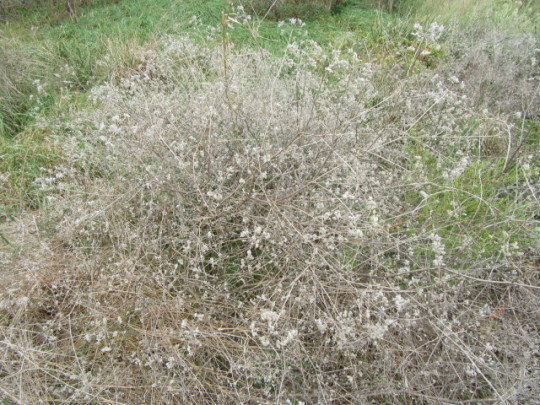
View On WordPress
#Danaus plexippus (Monarch Butterfly)#Eleusine indica (Goosegrass)#Eupatorium altissimum (Tall Thoroughwort)#Eupatorium serotinum (Late Boneset)#Persicaria hydropiper (Water Pepper)#Persicaria pensylvanica (Pinkweed)#Rhus glabra (Smooth Sumac)#Symphyotrichum novae-angliae (New England Aster)#Torilis japonica (Upright/Japanese Hedge Parsley)#Vernonia missurica (Missouri Ironweed)#Xanthium strumarium (Rough Cocklebur)
0 notes
Text
Perplexing Persicaria
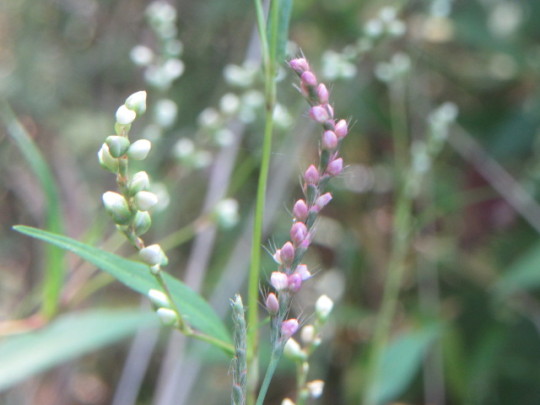
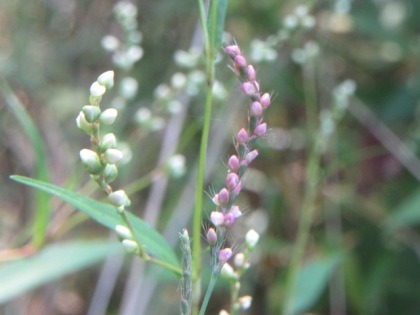
Persicaria punctata (Dotted Smartweed) on the left and Persicaria longiseta (Oriental Lady’s Thumb) on the right. This photo was taken near the pond at the back of the farm on 9-7-19. Persicaria punctata has “dots” on the flowers and Persicaria longiseta has cilia (hairs) on their flowers.
Hello everyone! I hope this post finds you all well. I think it has been three months since I decided to…
View On WordPress
#Persicaria hydropiper (Water Pepper)#Persicaria longiseta (Oriental Lady&039;s Thumb)#Persicaria maculosa (Lady&039;s Thumb)#Persicaria pensylvanica (Pinkweed)#Persicaria punctata (Dotted Smartweed)#Persicaria sagittata (Heartleaf Tearthumb)#Persicaria virginiana (Virginia Knotweed)
0 notes
Text
Introduction To The Next Post (Perplexing Persicaria)...
Introduction To The Next Post (Perplexing Persicaria)…
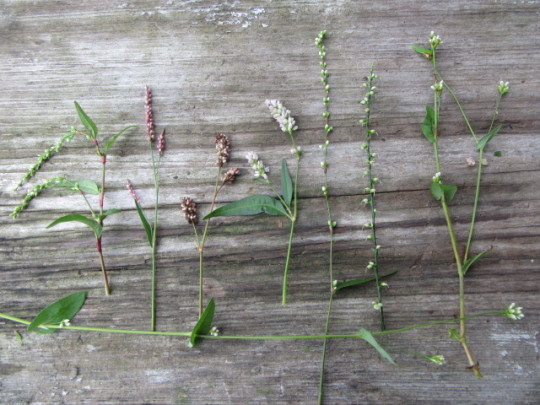
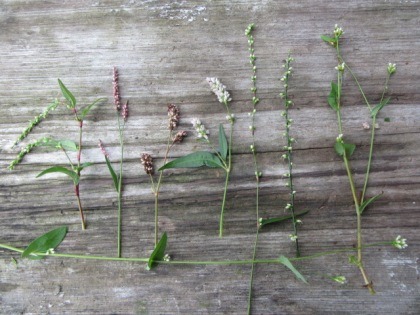
Persicaria species from left to right: Persicaria hydropiper (Water Pepper), Persicaria longiseta (Oriental Lady’s Thumb), Persicaria maculosa (Lady’s Thumb), Persicaria pensylvanica (Pinkweed), Persicaria punctata (Dotted Smartweed), Persicaria virginiana (Jumpseed), and Persicaria sagittata (Heartleaf Tearthumb) (also along the bottom. Photo taken on 9-22-19, #635-3.
Hello everyone! I hope this…
View On WordPress
0 notes